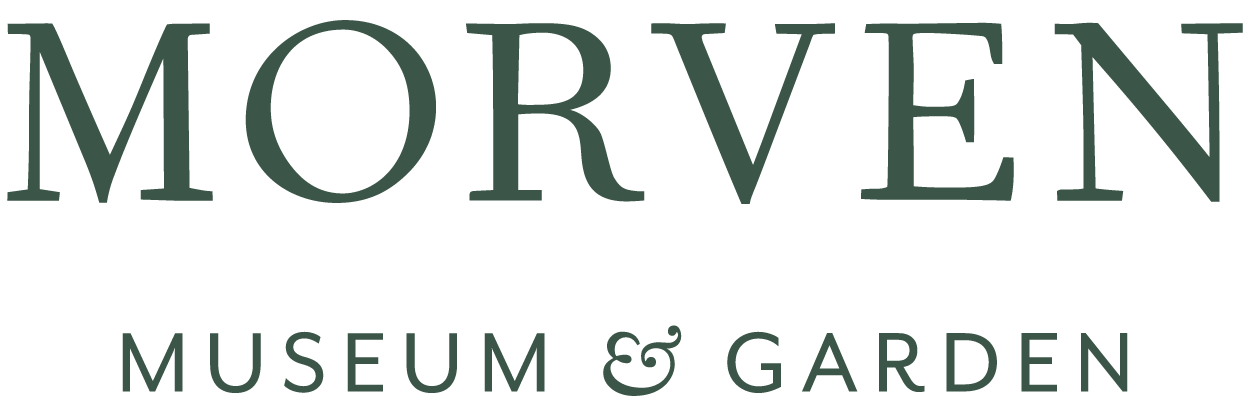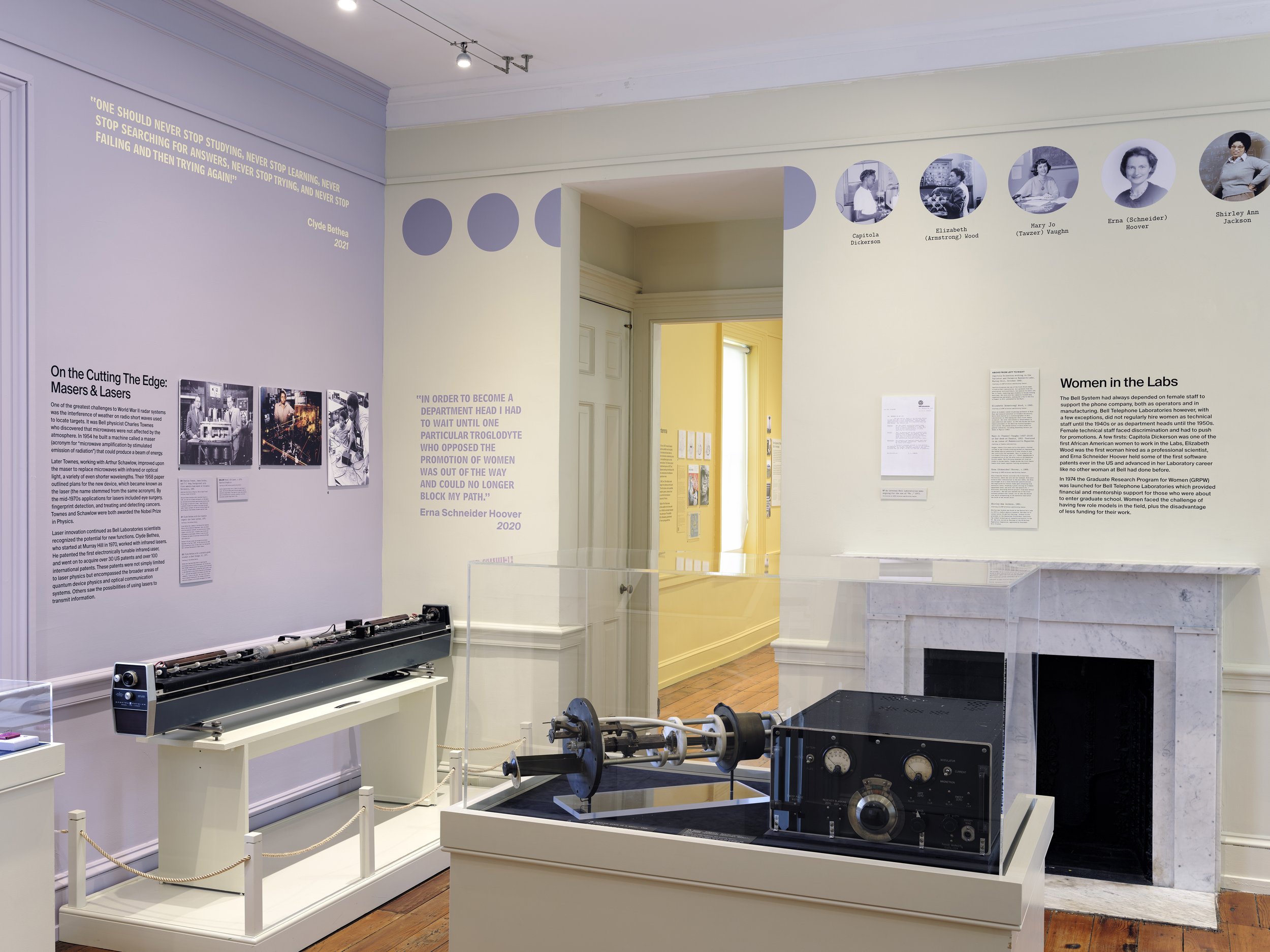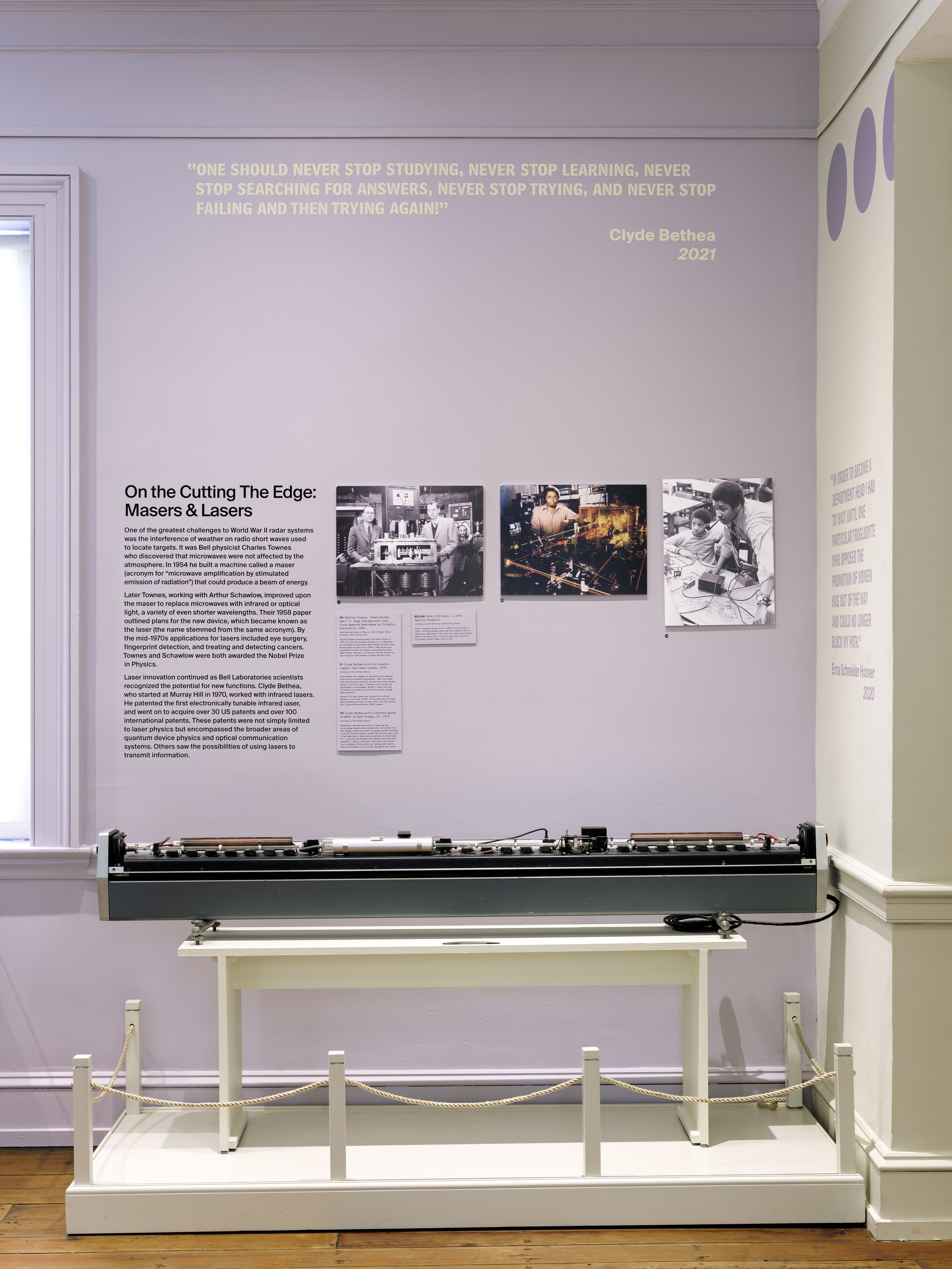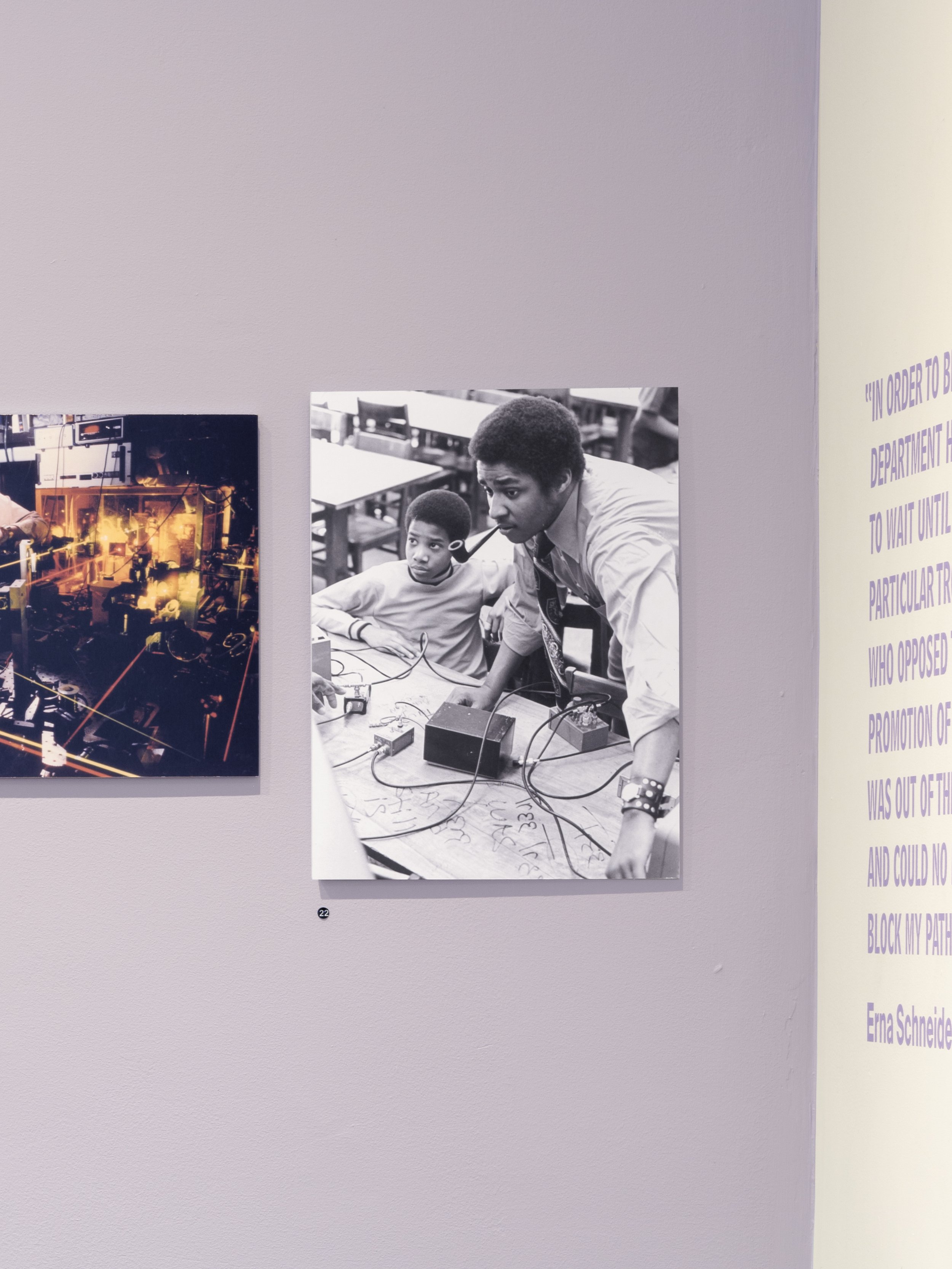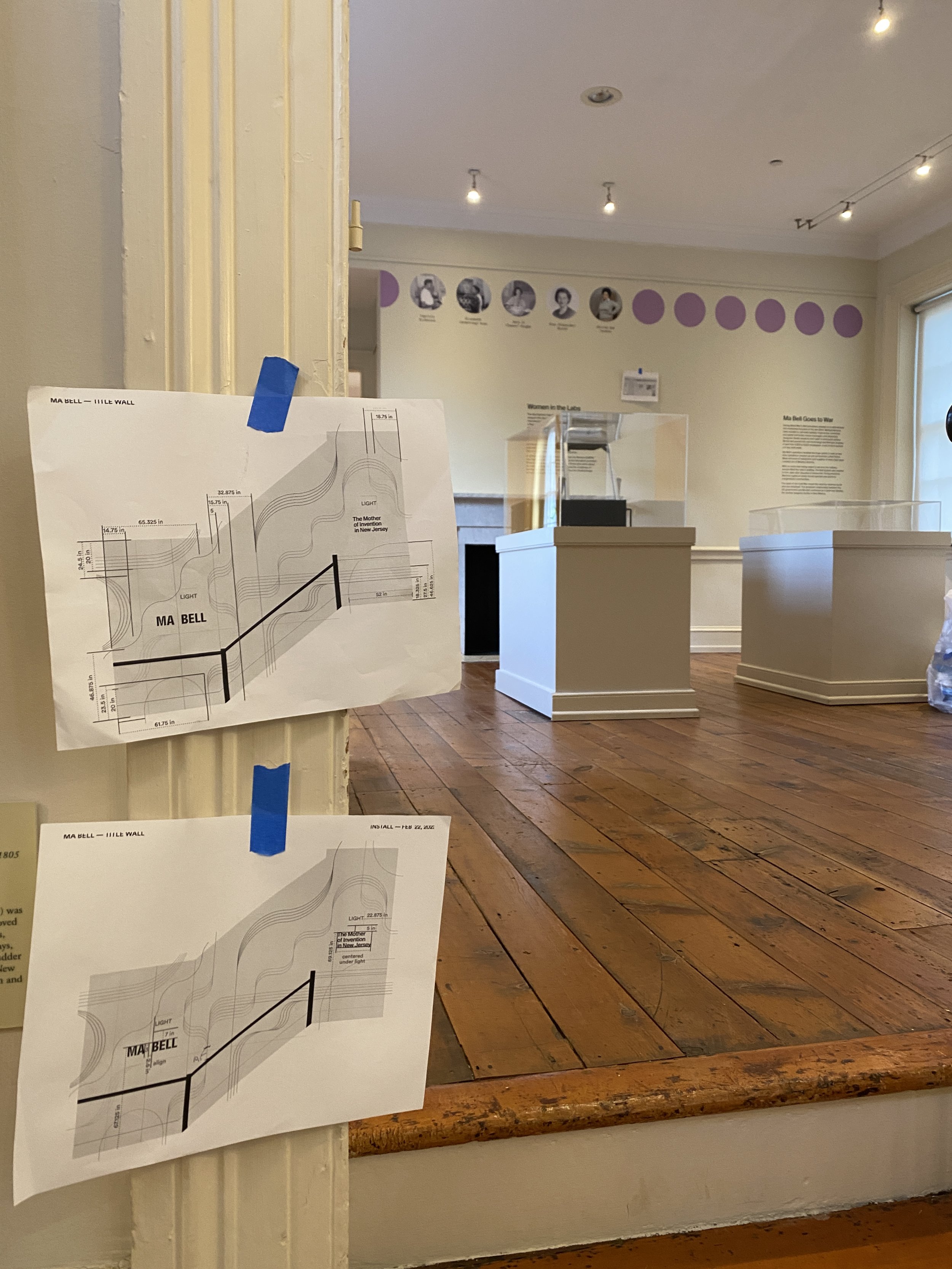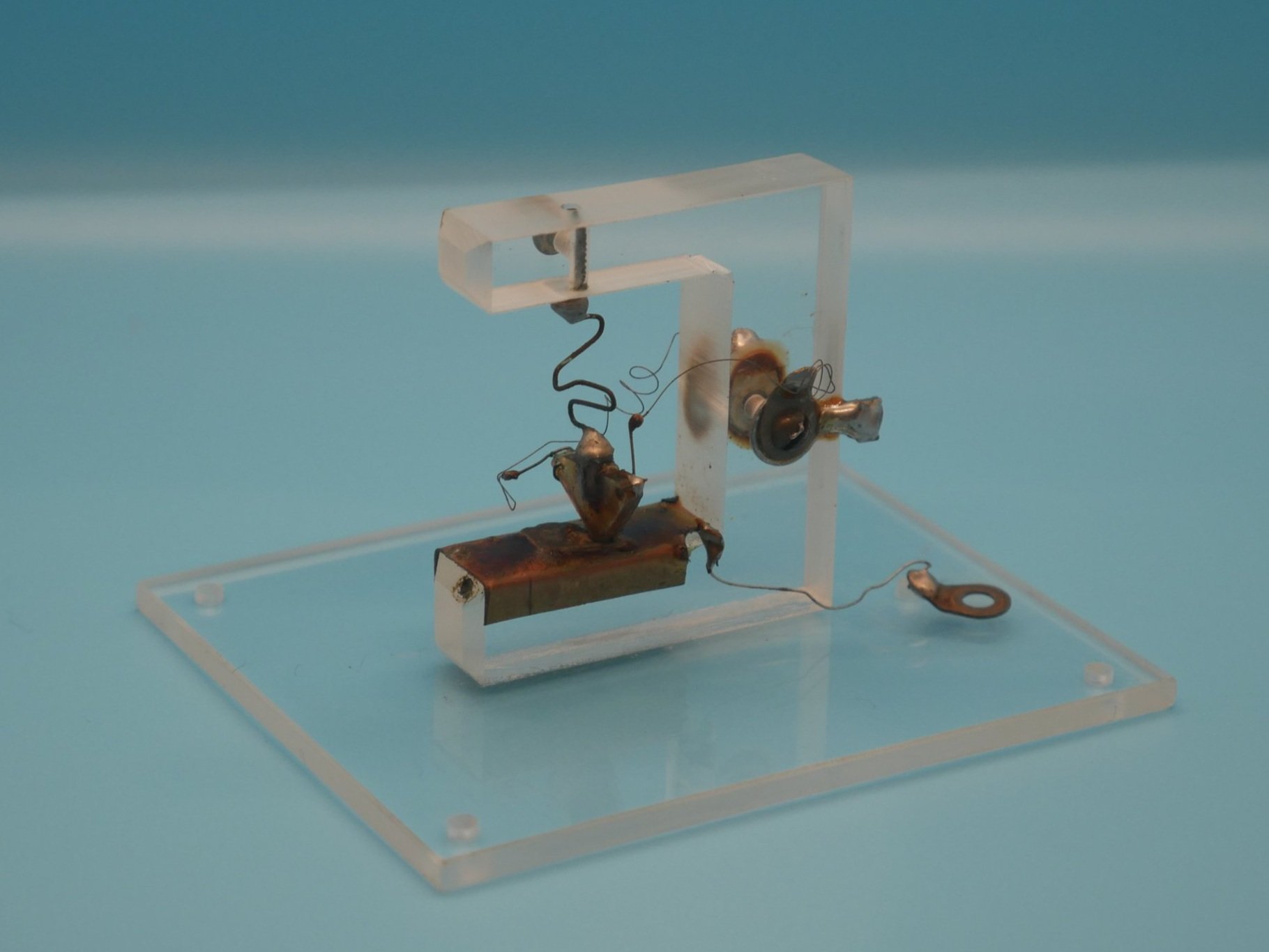Gallery 4
Click here to head back to the Ma Bell landing page.
Murray Hill: Birthplace of Modern Technology
Bell Laboratories, Murray Hill, New Jersey, 1949.
Collection of AT&T Archives and History Center.
The opening of a new state-of-the-art laboratory complex in Murray Hill, NJ ushered in a golden age at Bell Labs. The 225-acre piece of land nestled beneath the Watchung Mountains had been purchased in 1930, but the project was put on hold during the Great Depression. Bell executives toured various facilities around the world looking for inspiration for the new complex. Over the next several decades, the building blocks for today’s technology were forged here, including transistors, solar cells, and modern microphones.
As the crown jewel of American labs, Murray Hill attracted the greatest minds in the world. Many scientists remember how the answer to nearly any problem was a short walk away. Building 1 opened in 1942, with additional buildings added on later. All were connected, facilitating the exchange of ideas between departments. The culture of collaboration stands out in the memories of so many that worked there. “Each department had a tea room...with lots of blackboards. Late in the afternoon [they] tended to fill up with people, and the blackboards did tend to fill up with equations,” remembered Frank Sinden, who worked at Murray Hill from 1957–1995.
Click here to learn more about Murray Hill.
Ma Bell Goes to War
During World War II, Bell executives advised on a national level and employees focused on the war effort. Mathematicians were needed to calculate ballistic trajectories, scientists encrypted and broke coded messages, and physicists designed deadly weapons and radar to anticipate strikes. Money was poured into new technology and Bell labs doubled in size from 4,600 to 9,000 employees – most of them worked a 6-day work week.
Ma Bell’s operators handled the huge uptick in calls as war time operations ramped up and servicemen called home. Mass amounts of equipment and supplies of every type were cranked out of Western Electric.
With so many men being called to serve in the military, women filled the void in staffing. The Bell System also started to hire Jews after decades of antisemitic hiring practices. Wartime logistical needs forced opened new doors to marginalized communities.
The dawn of the Cold War meant the need for defense by air and sea remained. The symbiotic relationship between the US government and Ma Bell continued as it took over Sandia, the nuclear weapons facility in New Mexico.
Click here to learn more about Bell’s participation in the war.
“War Needs the Wires This Christmas,” 1942. Bell Telephone System.
Women in the Labs
Women’s Softball team at Whippany, 1944.
Collection of AT&T Archives and History Center.
The Bell System had always depended on female staff to support the phone company, both as operators and in manufacturing. Bell Telephone Laboratories however, with a few exceptions, did not regularly hire women as technical staff until the 1940s or as department heads until the 1950s. Female technical staff faced discrimination and had to push for promotions. A few firsts: Capitola Dickerson was one of the first African American women to work in the Labs, Elizabeth Wood was the first woman hired as a professional scientist, and Erna Schneider Hoover held some of the first software patents ever in the US and advanced in her Laboratory career like no other woman at Bell had done before.
In 1974 the Graduate Research Program for Women (GRPW) was launched for Bell Telephone Laboratories which provided financial and mentorship support for those who were about to enter graduate school. Women faced the challenge of having few role models in the field, plus the disadvantage of less funding for their work.
Click here to learn more about the women who worked at Bell Labs.
On the Cutting Edge: Masers & Lasers
Clyde Bethea with his tunable organic dye laser system, 1978.
Image Courtesy of the Bethea Family.
One of the greatest challenges to World War II radar systems was the interference of weather on radio short waves used to locate targets. Bell physicist Charles Townes discovered that microwaves were not affected by the atmosphere. In 1954 he built a machine called a maser (acronym for “microwave amplification by stimulated emission of radiation”) that could produce a beam of energy.
Later Townes, working with Arthur Schawlow, improved upon the maser to replace microwaves with infrared or optical light, a variety of even shorter wavelengths. Their 1958 paper outlined plans for the new device, which became known as the laser (the name stemmed from the same acronym). By the mid-1970s applications for lasers included eye surgery, fingerprint detection, and treating and detecting cancers. Townes and Schawlow were both awarded the Nobel Prize in Physics.
Laser innovation continued as Bell Laboratories scientists recognized the potential for new functions. Clyde Bethea, who started at Murray Hill in 1970, worked with infrared lasers. He patented the first electronically tunable infrared laser, and went on to acquire over 30 US and over 100 international patents. These patents were not simply limited to laser physics but encompassed the broader areas of quantum device physics and optical communication systems. Others saw the possibilities of using lasers to transmit information.
Click here to learn more about masers and lasers.
Solar Cells: Sunshine & Silicon
The possibility of solar power was introduced to Bell Laboratories in the 1930s, when engineer Russell Ohl found that silicon was photosensitive, meaning that the material generated energy when exposed to sunlight. The creation of the transistor in 1947 laid the path for solar energy as a commercially viable power source because the small semiconductors did not require large amounts of energy.
In the mid-1950s research on solar power accelerated as scientists were working on solutions for powering remote telephones. In 1954, Cal Fuller, Daryl Chapin, and Gerald Pearson created and demonstrated the first truly effective solar cell at Murray Hill. While it was ultimately determined that cheaper means of power could be found for telephones, scientists were soon looking to incorporate solar energy for the most remote outpost of all: outer space.
Click here to learn more about solar cells
Claude Shannon: Father of Information Theory
The first silicon photovoltaic device demonstrated by engineer D.E. Thomas, 1954.
Collection of AT&T Archives and History Center.
Claude Shannon (1916–2001) studied electrical engineering and mathematics at the University of Michigan and then at the Massachusetts Institute of Technology (MIT) where professors quickly recognized his unique mind. In 1940 Shannon accepted a fellowship at the Institute of Advanced Study (IAS) in Princeton but soon left for the National Defense Research Committee before moving onto Bell Labs where he worked on anti-aircraft, fire control and cryptography.
After the war Shannon moved to newly opened Murray Hill labs where, in the famously collaborative hallways, the introverted Shannon often kept his office door closed. Although he mostly kept to himself, he could be seen riding his unicycle in the hallways and parking lots.
In 1948, with a paper called “A Mathematical Theory of Communication,” Shannon introduced the idea that information was a “measurable element,” and defined the basic unit – a 1 or a 0 – which would become known as a “bit” (from “binary digit”). He had invented Information Theory (mathematics based around how to store and transfer data), laying the groundwork for the digital age. The ramifications of his theory touch every aspect of modern communication – from the cell phone to the internet to deep space communications.
Click here to learn more about Claude Shannon.
Transistor
Replica of the first transistor.
Collection of AT&T Archives and History Center.
Consistently called the most important invention to come out of Bell Laboratories, the transistor made the world we know possible. Technology was limited by its heavy reliance on bulky vacuum tubes which used a great deal of energy, gave off heat, and burnt out. It was believed that amplifiers with semiconductors, like germanium or silicon, would be the key because they can both conduct and resist the flow of electricity depending on conditions.
Wartime work on radar further confirmed the possibilities of silicon. The race was on, as labs around the country began to focus on semiconductors. Not wanting to lose out on a patent, the labs put their best young physicist on the job: William Shockley, who in turn put together a team including Walter Braittain, an experimental physicist, and John Bardeen, who was knowledgeable about semiconductors. With bureaucracy-free access to metallurgists, chemists, and engineers, the transistor project would come to epitomize what the Murray Hill Bell Labs culture could achieve.
Largely, Shockley left Brattain and Bardeen alone to work out the problem. Months of experimentation led to a breakthrough with a germanium semiconductor, on December 23, 1947. When Bell Labs announced the transistor the following June, the tiny amplifier did not make a major splash. Few beyond Shockley could truly imagine how the transistor would revolutionize technology and world culture.
Click here to learn more about the transistor.
Shockley: Later in Life & Foundation of Silicon Valley
Transistor Inventors William Shockley, John Bardeen, and Walter Brattain, 1948 .
Collection of AT&T Archives & History Center.
Shockley’s reputation as a jealous manager became widespread around Murray Hill. When it became clear he would not be chosen for promotion, Shockley left to start his own company, Shockley Semiconductors, in his hometown of Palo Alto, CA. His temper followed him into his new venture and disheartened his staff, two of which left and started their own company: Intel. This kicked off the boom of Silicon Valley, named for the chief material used in the transistor.
Bill Shockley’s difficult personality was not the only thing to leave a scar on his reputation. In his later life, he became a self-proclaimed expert on race and a supporter of eugenics. The Pioneer Fund, a nativist White-supremicist group, took interest in Shockley’s work and funded his pseudo-research on genetics.
Click here to move to the next room in this exhibition, Gallery 5.
